#lysimachus
Text

One of my friends is a big fan of Lysimachus, so I drew the Diadochi with Alexander The Great. He posted it on reddit already atually, there were some comments on it, especially why Craterus is so short. Well, that's because I completely misjudged the height when I drew him. At a certain point I was done drawing all of them and I even already had base colors etc. and I noticed that Craterus was just floating around, he wasn't even touching the ground. So instead of elongating him with the select tool, I decided to just draw him a sort of stool, so it wouldn't be as obvious. So no he wasn't short in real life, I just miscalculated.
I actually drew this as a "strike a pose" concept, but someone said they look like a boyband and I actually like that better: Alexander and the Diodochs, performing on Queen levels is now by far one of my favorite things to think about.
#digital drawing#illustration#digital art#digital illustration#krita#alexander the great#diadochi#hepheastion#lysimachus#cassander#seleucus#antigonos#ptolemy#craterus
25 notes
·
View notes
Text
Alexander the Great in the Bible
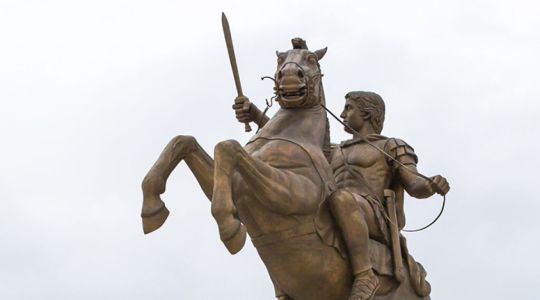
View On WordPress
#1 Maccabees#Alexander the Great#Ancient Empires#Bible#Biblical insight#Cassander#Daniel#Events#God#Greek#Jerusalem#Lysimachus#Persia#Ptolemy#Sekeucus
1 note
·
View note
Text
Language of Flowers: Goldylocks
In the language of flowers, each day of the year has its own designated flower. The flower for today, November 29, which is the birthday of my dear and recently departed friend Rose, is Goldylocks, which signifies languishing.
Image above from Wikipedia.
Lysimachia nummularia goes by many common names, including Goldylocks, creeping jenny, creeping charley, moneywort, downhill-of-life, twopenny…

View On WordPress
#birthday#creeping charley#creeping jenny#downhill-of-life#Goldylocks#herbalism#Language of flowers#Lysimachia nummularia#Lysimachus#money myrtle#moneywort#november#Thrace#twopenny grass
0 notes
Text

Tetradrachm - Ancient Greek Macedonian Kingdom, Thrace, King Lysimachus Reproduction Coin.
Obverse: diademed head of the deified Alexander right, with horn of Ammon.
Reverse: Athena Nikephoros (goddess Athena of Victory) seated left, holding Nike, left arm resting on shield, transverse spear in background; Φ to outer left; to inner left, turreted head of goddess Tyche right (Smyrna mint).
Diameter coin 28 mm.
#tetradrachm#coin#ancient#greek#greece#macedonian#kingdom#king#Lysimachus#Lysimachos#alexander the great#goddess athena#collectibles#coins#Thrace
0 notes
Text
hate learning about the diadochi. deeply nonsense set of unserious people
#how do you start a war with two teams and by the end they are completely switched#demeterius poliorketes voice i will always protect lysimachus. IM ON MY WAY TO MURDER LYSIMACHUS!#the musical chairs of ancient politics#be quiet b
0 notes
Text

Alexander and (some of) his mates. Hephaestion, Ptolemy, Seleucus, and Lysimachus.
Drew this mostly to see how the white cavalry uniform matches with Alexander's. Sel is a bit of an odd one here (infantry uniform WIP).
193 notes
·
View notes
Text

Gold stater of King Lysimachus, Thrace, 306-281 BC
from The Yale University Art Gallery
196 notes
·
View notes
Text
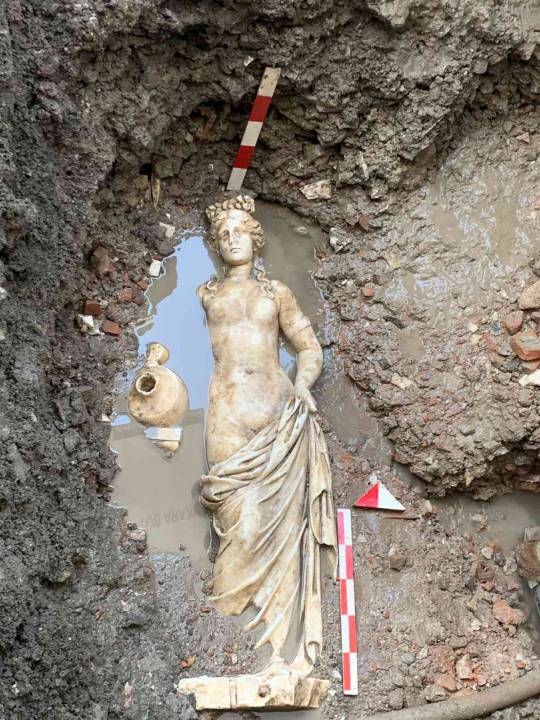
Ancient Roman Marble Statue Depicting a Nymph Found in Turkey
Excavations in the ancient city of Amastris, located in the Black Sea province of Bartın’s Amasra district, have unearthed a statue of a nymph thought to be 1800 years old. The artifact is set to be exhibited in the Amasra Museum soon.
Amasra’s coast was host to the Phoenician colony, Sesamus, in the 12th century B.C. The colony’s heyday was during the rule of Iranian Princess Amastris. It was among the most important of the Byzantine fortress harbors on the south shore of the Black Sea.
The site of the excavation was donated to the Ministry of National Education in 2014 and construction started for the building of a school on the land in 2017 when some remains believed to belong to the Roman period were discovered, upon which the construction works were stopped and the area was taken under protection.
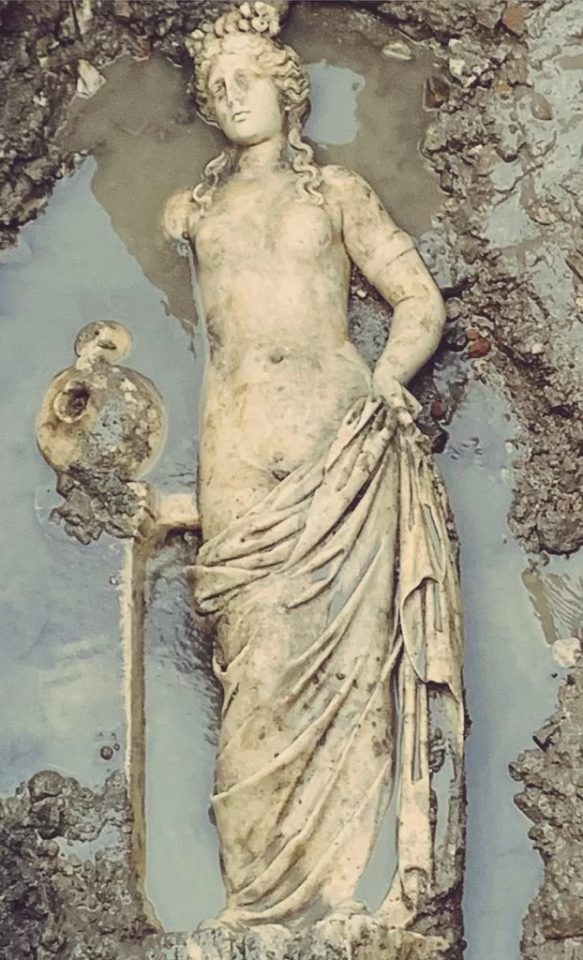
Excavations are carried out under the direction of the Amasra Museum Directorate and the scientific consultancy of Bartın University.
During the excavations carried out under the direction of Amasra Museum Director Zübeyde Kuru, a statue of a water nymph, thought to be 1800 years old, was found 3 meters below the surface.
In the statement made on the social media account of the Excavations and Research Department of the General Directorate of Cultural Heritage and Museums of the Ministry of Culture and Tourism, the following statements were made:


“In our excavations in Bartın, Amasra, Gymnasium, a 1.53-centimeter-high statue belonging to the 2nd century AD and considered to be a Nymphe (water nymph) was unearthed.”
Situated in the ancient region of Paphlagonia, the original city seems to have been called Sesamus and it was mentioned by Homer.
The place derived its name Amastris from Amastris, the niece of the last Persian king Darius III, who was the wife of Dionysius, tyrant of Heraclea, and after his death the wife of Lysimachus.
Amastris (ca. 340/39-285/84), was first married to Craterus, then to Dionysius of Heraclea, and finally to Lysimachus. She was the mother of four known children; was supposedly divorced when Lysimachus married Arsinoe; Amastris founded an eponymous city in Paphlagonia; she was the first queen to issue coins in her name; and was allegedly murdered by her sons for interfering in their affairs.
By Leman Altuntaş.
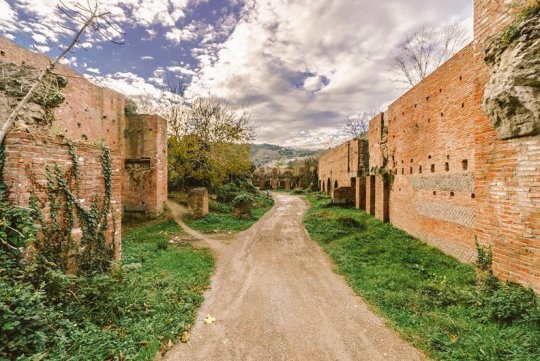
#Ancient Roman Marble Statue Depicting a Nymph Found in Turkey#ancient city of Amastris#marble#marble statue#ancient artifacts#archeology#archeolgst#history#history news#ancient history#ancient culture#ancient civilizations#roman history#roman empire#roman art
215 notes
·
View notes
Text
An Excerpt from the Aberdeen Bestiary
I've started preparing the bestiaryposting, and have encountered one entry that doesn't really fit into what we're doing. Not only is it one of the longest entries, but instead of "let me tell you about this animal", it's taking more of a "we all already know about this animal, so I'm going to share some stories about specific ones" approach. But out of a sense of completionism, I can't just not post it, so here you go.
Dog
The Latin name for the dog, canis, seems to have a Greek origin. For in Greek it is called cenos, although some think that it is called after the musical sound, canor, of its barking, because when it howls, it is also said to sing, canere. No creature is more intelligent than the dog, for dogs have more understanding than other animals; they alone recognise their names and love their masters.

There are many kinds of dogs: some track down the wild beasts of the forests to catch them; others by their vigilance guard flocks of sheep from the attacks of wolves; others as watch-dogs in the home guard the property of their masters lest it be stolen by thieves at night and sacrifice their lives for their master; they willingly go after game with their master; they guard his body even when he is dead and do not leave it. Finally, their nature is that they cannot exist without man.
Also of the nature of dogs
We read that dogs have such great love for their masters, as when King Garamentes was caught by his enemies and taken into captivity, two hundred dogs went in formation through enemy lines and led him back from exile, fighting off those who resisted them. When Jason [Licio] was killed, his dog rejected food and died of starvation. The dog of King Lysimachus threw itself in the flame when its master's funeral pyre was lit and was consumed by fire along with him. When Apius and Junius Pictinius were consuls, a dog that could not be driven away from its master, who had been condemned, accompanied him to prison; when, soon afterwards, he was executed, it followed him, howling. When the people of Rome, out of pity, caused it to be fed, it carried the food to its dead master's mouth. Finally, when its master's corpse was thrown into the Tiber, the dog swam to it and tried to keep it from sinking.
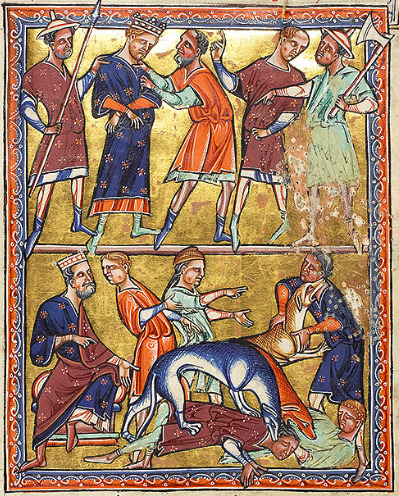
When a dog picks up the track of a hare or a deer and comes to a place where the trail divides or to a junction splitting into several directions, it goes to the beginning of each path and silently reasons with itself, as if by syllogism, on the basis of its keen sense of smell. 'Either the animal went off in this direction,' it says,'or that, or certainly it took this turning.’
Again on the nature of dogs
Often, also, when a murder has been committed, dogs have produced clear evidence of the guilt of the accused, with the result that their unspoken testimony is for the most part believed. They say that at Antioch, in a distant quarter of the city at dusk, a man was murdered, who had his dog with him on a lead. A soldier had been the perpetrator of the deed, with robbery as his motive. Undercover of the growing darkness, he fled elsewhere. The corpse lay unburied; the crowd of onlookers was large; the dog stayed at its master's side, howling over his sad fate. It happened that the man who had committed the crime, acting confidently in order to convince people of his innocence - such is the cunning way in which men think- joined the circle of onlookers and, feigning grief, approached the corpse. Then the dog, briefly abandoning its doleful lament, took up the arms of vengeance, seized the man and held him, and, softly singing a pitiful song, as in the epilogue of a tragedy, moved everyone to tears; and the fact that the dog held that man alone, of the many that were there, and did not let him go, lent weight to its case. In the end, the murderer was at a loss because the evidence in the case was so plain; he could not clear himself by objecting that he was the victim of anyone's hate, enmity, envy or spite, and he could no longer rebut the charge. Because it was very difficult for him, he suffered punishment, because he could offer no defence.
A dog's tongue, licking a wound, heals it. A dog's way of life is said to be wholly temperate. A puppy's tongue is generally a cure for internal injuries. It is characteristic of a dog that it returns to its vomit and eats it again. If a dog swims across a river carrying a piece of meat or anything of that sort in its mouth, and sees its shadow, it opens its mouth and in hastening to seize the other piece of meat, it loses the one it was carrying.

In some ways preachers are like dogs: by their admonitions and righteous ways they are always driving off the ambushes laid by the Devil, lest he seize and carry off God's treasure - Christian souls. As the dog's tongue, licking a wound, heals it, the wounds of sinners, laid bare in confession, are cleansed by the correction of the priest. As the dog's tongue heals man's internal wounds, the secrets of his heart are often purified by the deeds and discourse of the Church's teachers. As the dog is said to be temperate in its ways, the man who is set over others diligently studies wisdom and must avoid drunkenness and gluttony in every way, for Sodom perished in a surfeit of food. Indeed, there is no quicker way for the Devil, his enemy, to take possession of man than through his greedy gullet. The dog returning to its vomit signifies those who, after making their confession, heedlessly return to wrongdoing. The dog leaving its meat behind in the river, out of desire for its shadow, signifies foolish men who often forsake what is theirs by right out of desire for some unknown object; with the result that, while they are unable to obtain the object of their desire, they needlessly lose what they have given up.
Some dogs are called licisici, wolf-hounds, because they are born of wolves and dogs, when by chance these mate. In India bitches are tethered at night in the forests to breed with wild tigers, by whom they are mounted, producing very fierce dogs, so strong that with their grip they can pull down lions.
#maniculum bestiaryposting#dog#medieval literature#medieval art#medieval manuscripts#illuminated manuscript
155 notes
·
View notes
Photo
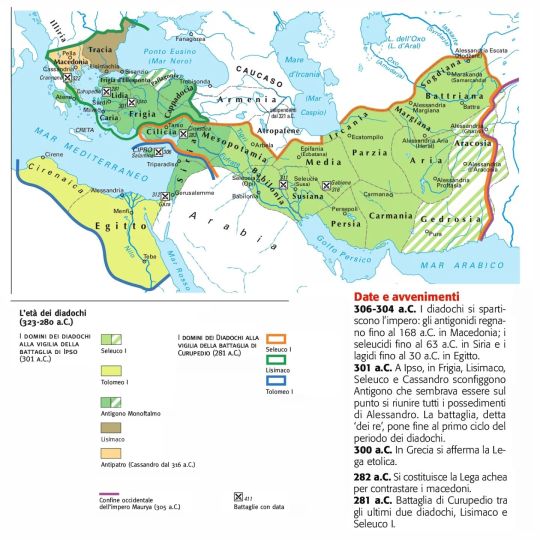
The Hellenistic world
"Atlante storico tascabile", Istituto Geografico De Agostini, Novara,1999
via cartesdhistoire
In 323 BC, Alexander died without heirs, possibly from the plague. His empire, already facing insurrectionary movements, did not outlive him. His generals, the Diadochi, began a protracted struggle for power: Antipater in Macedonia, Lysimachus in Thrace, Ptolemy in Egypt, Antigonus Monophthalmos in Asia Minor and Syria, and Seleucus in Babylon.
The first phase of the war among the Diadochi concluded at Ipsus in Phrygia in 301 BC, with the "battle of the kings." Lysimachus, Seleucus, and Cassander, son of Antipater, defeated Antigonus, who had been consistently victorious until then. Seleucus and Ptolemy, prudent rulers, founded dynasties destined for long endurance, even though they were not immune to the temptation of rebuilding Alexander's empire. The focal point of the conflict became Macedonia, and long wars ensued for its dominion.
The Epigones, successors of the Diadochi, instead supported the status quo. The kings of Egypt and Syria founded new cities, respecting the rights of existing poleis.
Nearly all Hellenistic kings surrounded themselves with scholars, artists, and scientists. Ptolemy I founded the largest library of antiquity in Alexandria, Egypt.
In 277 BC, the Galatians, of Celtic descent, settled in Asia Minor. Some provinces declared independence, including the kingdom of Pergamon, a city renowned for being built on terraces, distinguished by the splendor of its culture and art, exemplified by a library of 400,000 volumes.
The kingdom of Bactria, situated in the northern region of present-day Afghanistan, was also significant, representing the eastern extent of Hellenistic influence and serving as a crossroads between the cultures of the Mediterranean region and those of China and India.
Antiochus III, the greatest of the Seleucids, expanded the empire's territories. However, the invasion of Greece in 192 BC triggered a war with Rome. Following the war, the king was compelled to accept peace, marking the beginning of the inexorable decline of his empire.
86 notes
·
View notes
Photo

Ptolemaic Dynasty
The Ptolemaic dynasty was a Macedonian royal family that ruled Ptolemaic Egypt from 323 to 30 BCE. It was founded by Ptolemy I, a general and successor of Alexander the Great. They built Alexandria, including the Lighthouse of Alexandria and the Great Library of Alexandria. The dynasty ended when Rome conquered Egypt in the reign of Cleopatra VII.
The dynasty presented themselves as both Greek kings and Egyptian pharaohs. They never assimilated into Egyptian culture, and their reign began a process of Greek immigration and acculturation in Egypt. The dynasty practiced incestuous marriage, with most rulers marrying close relatives.
The Ptolemaic Empire expanded rapidly before civil wars, territorial losses, and natural disasters weakened it in the 2nd century BCE. The final generations of Ptolemies were reliant on the Roman Republic for military support.
Origins
The Ptolemaic dynasty was founded by Ptolemy I (336-282 BCE), son of Macedonian nobles Lagos and Arsinoe. Ptolemy was one of Alexander's somatophylakes, trusted bodyguards and generals. The dynasty later encouraged a myth that Ptolemy was really the illegitimate son of Philip II of Macedon (r. 359-336 BCE), making him Alexander the Great's half-brother.
Ptolemy was present during Alexander's conquest of Egypt (332 BCE), which was under the oppressive rule of the Achaemenid Empire. Alexander was welcomed by the Egyptian people and proclaimed pharaoh in Memphis. He made offerings to the Egyptian gods, demonstrating his desire to uphold Egyptian tradition, a policy that the Ptolemies would imitate. He also founded Alexandria, a classical Greek city on the coast of Egypt.
visited the oracle of Ammon. But perhaps more significant for the future was Alexander's assumption of the religious titles and honors of the Egyptian king, especially upholding the kingship's linkage to the god Ptah, which ensured the lasting support of his priesthood, a significant factor that continued into the time of Cleopatra.
(Chauveau, chapter 2)
The death of Alexander the Great in Babylon in 323 BCE created a dispute over who would inherit his empire. His half-brother Philip Arrhidaeus was eventually named king, and Alexander and Roxanne's son Alexander IV of Macedon became co-ruler after his birth. Perdiccas took the role of regent, making him effectively its ruler. Alexander's generals, called the Diadochi (lit. "successors" in Greek), became satraps of its provinces. Ptolemy was made satrap of Egypt, the wealthiest and most desirable province.
The Diadochi, including Ptolemy, Seleucus I Nicator, Lysimachus, Crateros, and Antipater, resisted Perdiccas' attempts to control them. In 321 BCE, Ptolemy stole Alexander's mummified body from Perdiccas, who was attempting to bring it back to Macedon. Ptolemy buried Alexander in Memphis, later moving the body to Alexandria, to strengthen his connection to Alexander's legacy. This theft escalated the tension between Ptolemy and Perdiccas, who unsuccessfully attempted to invade Egypt and was killed by his own mutinying troops.
Ptolemy I Soter
Marie-Lan Nguyen (Public Domain)
Philip Arrhidaeus was murdered in 317 BCE, followed by Alexander IV in 310 BCE. The Diadochi finally proclaimed themselves autonomous kings in 306 BCE. This act formally established the Ptolemaic dynasty, which ruled for another 300 years. The Wars of the Diadochi and their descendants fighting over territory resulted in the Syrian Wars (274-168 BCE) fought between the Ptolemies and the Seleucid Empire. Ptolemy I conquered Cyprus, Cyrene, Coele-Syria, and Phoenicia, forming the basis of the Ptolemaic Empire.
Continue reading...
41 notes
·
View notes
Text



Вербейник обыкновенный на берегу речного острова.
Любопытна этимология латинского родового названия вербейников — Лизимахия (Lysimachia). Оно дано по имени Лисимаха (род. ок. 360 г. до н.э.) — военачальника и телохранителя Александра Македонского, впоследствии правителя Македонской Фракии. По утверждению Плиния, Лисимах первым нашёл и описал вербейник.
Lysimachia vulgaris on the shore of a river island.
The etymology of the Latin generic name of loosestrife - Lysimachia (Lysimachia) is curious. It is given by the name of Lysimachos (born c. 360 BC), the military commander and bodyguard of Alexander the Great, later the ruler of Macedonian Thrace. According to Pliny, Lysimachus was the first to find and describe loosestrife.
#русский tumblr#россия#лето#природа#июль 2023#солнечный день#зеленая природа#лес#река#цветы#вербейник#макрофото#мои фото#russia#summer#july 23#nature#nature photography#greenery#forest#river#lysimachia#flowers#my photos#beauty of nature#original photography#photographers on tumblr#macro photography
133 notes
·
View notes
Text
For No Reason in Particular
A List of Named Ultramarines, including the Bush :)
@moodymisty Did you want a list of named Blue Boys? Or was that someone else? Hm...
Roboute Guilliman
Head Apothecary Captian Messinius- Of the White Consuls Apothecary Biologis
Marius Cage
Lysimachus Cestus
Remus Ventanus
Lucretius Corvo
Ptolemy
Tylos Rubio
Aeonid Theil
Oberdeii
Uriel Ventris
Saul Invictus
Demetrian Titus
Decimus Felix
Ferren Areios
Cassian
Altarion- Venerable Dreadnought
Antaro Chronus
Kastor- Chaplain
Torias Telion
Pasanius Lysane- Best friend and Sargent for Uriel
Cato Sicarius
Titus (former Captain) Space Marines 1 game
Leandros (little shit) Space Marines 1 game
Chapter Master Marneus Calgar
Chief Librarian Tigurius
First Captain Severus Agemman
Second Captain Acheran
Third Captain Mikael Fabian
Fifth Captain Phelian
Sixth Captain Epathus
Seventh Captain Gerad Ixion
Eighth Captain Hellios
Ninth Captain Sinon
Tenth Captain Antilochus
20 notes
·
View notes
Text
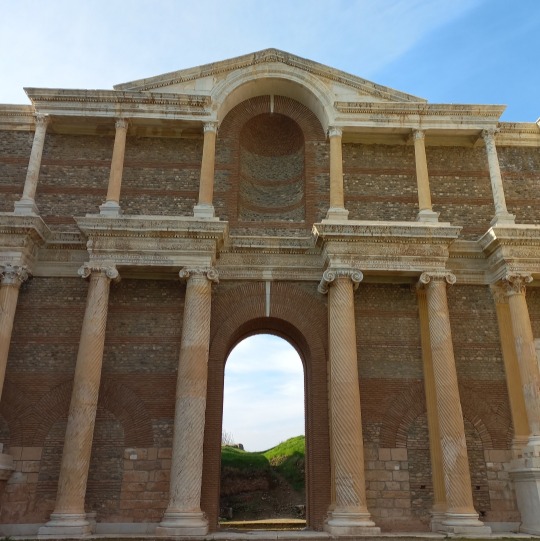


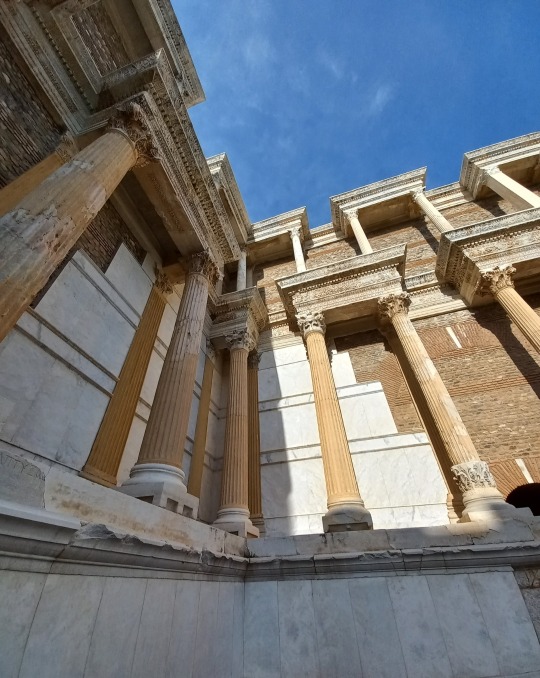

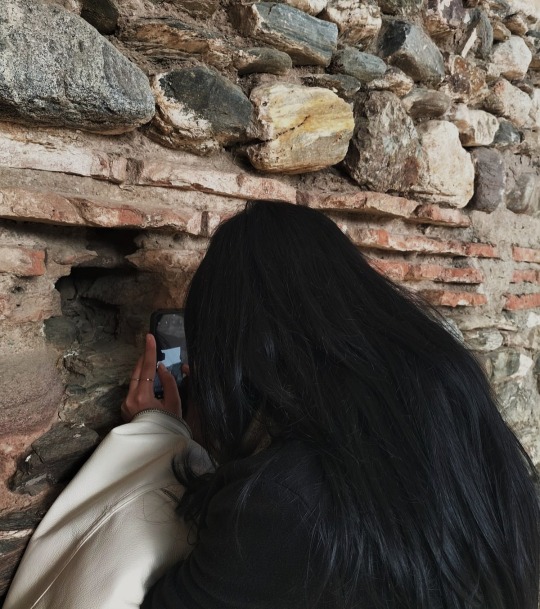


Sat, Jan 12 - I visited the ancient Roman city of Sardes today for the first time. (Information about the city is under this post.) It consisted of the Gymnasium with the remains of many Byzantine shops including restaurants and painting shops, a public pool, tombs, and a Synagogue. It was truly refreshing to see the place overall, but what I adored about the visit was the fact that you could imagine and experience the feeling of what it was like to be living in an ancient city, as it was empty because of the weather conditions. No voices, no noise, no motion, just the smell and the air of this ancient place. (I bet Henry Winter would die for it.) The Temple of Artemis was also close and I went there as well. I'll publish the pictures from the Synagogue and the Temple next if you want to check them out.
Sardis (/ˈsɑːrdɪs/ SAR-diss) or Sardes (/ˈsɑːrdiːs/SAR-de ess; Lydian: 𐤳𐤱𐤠𐤭𐤣, romanized: Sfard; Ancient Greek: Σάρδεις, romanized: Sárdeis; Old Persian: Sparda) was an ancient city best known as the capital of the Lydian Empire. After the fall of the Lydian Empire, it became the capital of the Persian satrapy of Lydia and later a major center of Hellenistic and Byzantine culture. It is now an active archaeological site in modern-day Turkey, in Manisa Province near Sart.
In 334 BC, Sardis was conquered by Alexander the Great. The city was surrendered without a fight, the local satrap having been killed during the Persian defeat at Granikos. After taking power, Alexander restored earlier Lydian customs and laws. For the next two centuries, the city passed between Hellenistic rulers including Antigonus Monophthalmos, Lysimachus, the Seleucids, and the Attalids. It was besieged by Seleucus I in 281 BC and by Antiochus III in 215-213 BC, but neither succeeded at breaching the acropolis, regarded as the strongest fortified place in the world. The city sometimes served as a royal residence, but was itself governed by an assembly.
In this era, the city took on a strong Greek character. The Greek language replaced the Lydian language in most inscriptions, and major buildings were constructed in Greek architectural styles to meet the needs of Greek cultural institutions. These new buildings included a prytaneion, gymnasium, theater, hippodrome, and the massive Temple of Artemis still visible to modern visitors. Jews were settled at Sardis by the Hellenistic king Antiochos III, where they built the Sardis Synagogue and formed a community that continued for much of Late Antiquity.
In 129 BC, Sardis passed to the Romans, under whom it continued its prosperity and political importance as part of the province of Asia. The city received three neocorate honors and was granted ten million sesterces as well as a temporary tax exemption to help it recover after a devastating earthquake in 17 AD.
Sardis had an early Christian community and is referred to in the New Testament as one of the seven churches of Asia. In the Book of Revelation, Jesus refers to Sardians as not finishing what they started, being about image rather than substance.
I take the pictures that are on my blog myself. In case you're interested in this post, I also post/reblog content including travel/cultural pictures, books, book recommendations, analysis, quotes, anything related to movies, series, and girl blog entries.
#sardes#ancient rome#ancient greek#gymnasium#ancient history#ancientmonuments#roman architecture#archeology#blog#travel#history#the secret history#henry winter#synagogue#dark academia#aesthetic#light academia#books#girlblogging#hellenistic#reading#if we were villains
39 notes
·
View notes
Text
"Arsinoë (II) lived a dramatic and adventurous life, full of extreme highs and lows. In its course, she played a part in the courts of four kings, married three times (twice to a sibling or half sibling), saw two of her sons murdered, fled two kingdoms because her life was in danger, yet ended her days in great wealth and security and ultimately was deified. Born in Egypt (as the daughter of Ptolemy I Soter and Berenike), she departed as a teenage bride for marriage to Lysimachus, ruler of Thrace, parts of Asia Minor, and Macedonia. After her husband died in battle, she tried to protect the claims of her three sons to rule in Macedonia against the attempts of others to seize the kingdom. In support of this effort, she married one of these rivals (her half brother Ptolemy Ceraunus), only to have this marriage alliance end in a bloodbath that compelled her to return to Egypt, where her brother Ptolemy II had succeeded their father as king. Once back, Arsinoë married her brother (the first full brother-sister marriage of a dynasty that would make such marriages an institution). She died in Egypt, having spent her last years playing a prominent role in the kingdom. Throughout much of her life, Arsinoë controlled great wealth and exercised political influence, but domestic stability characterized only her last few years.
Bitter and sometimes violent struggles for the throne marked nearly her entire career [...] Her childhood experience coping with life in a court divided by succession politics colored virtually all the major decisions of her life. She played the roles of both victim and victimizer: Arsinoë likely had a hand in one murder but endured the slaughter of her younger sons. She possessed some political acumen and considerable drive, but boldness and the willingness to take risks were her most salient personality traits, the ones that led to her most dramatic successes and failures. Like most of the members of the Macedonian elite, male and female alike, Arsinoë single-mindedly and sometimes violently pursued kleos (fame, renown) for herself, her sons, and her dynasty."
-Elizabeth D. Carney, "Arsinoë of Egypt and Macedon: A Royal Life"
15 notes
·
View notes
Text

7 notes
·
View notes